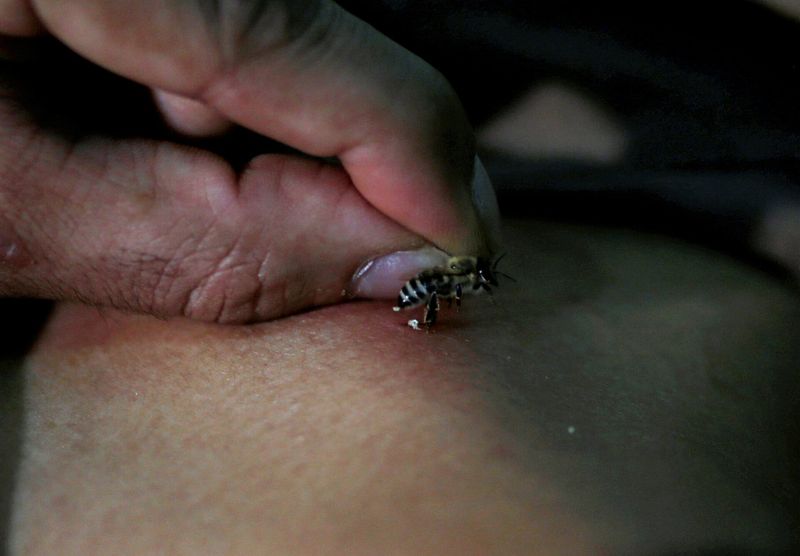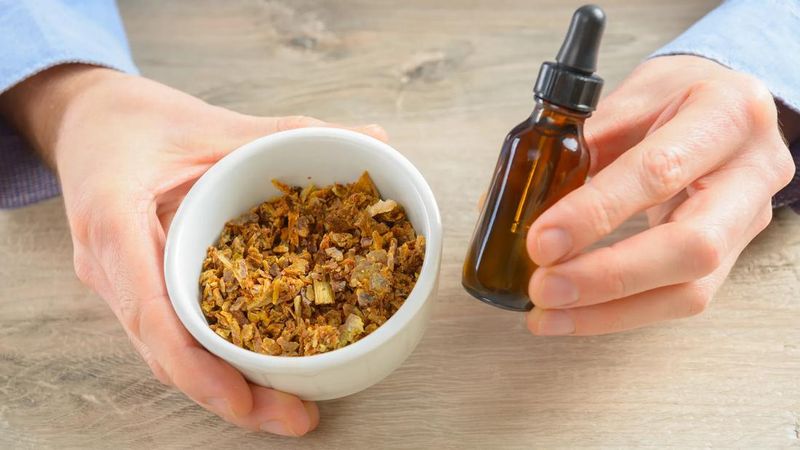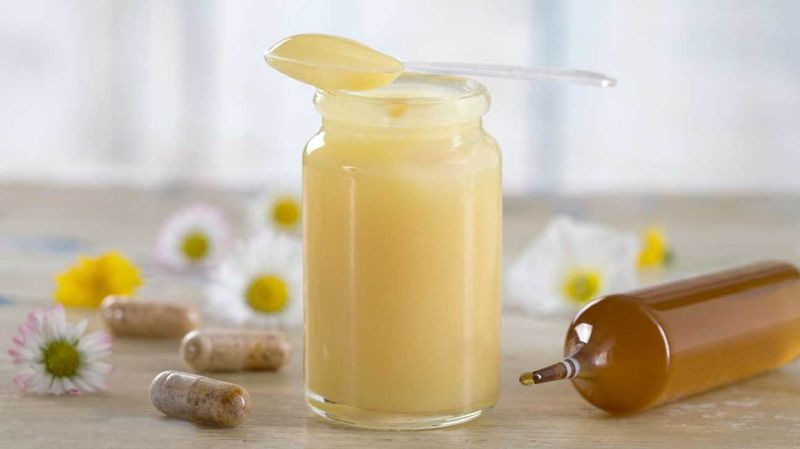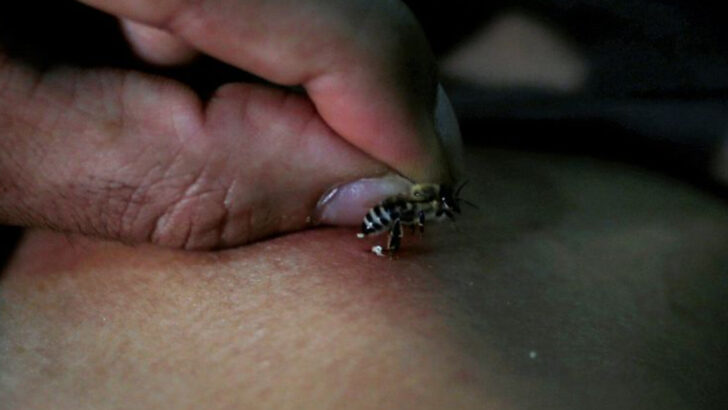They weren’t just buzzing around for honey.
In early America, honey bees moonlighted as tiny, winged pharmacists—packing stingers and medicinal gold. While doctors reached for crude tools and questionable potions, many settlers turned to the hive for real results.
Bee venom? Used for joint pain.
Raw honey? Slathered on wounds, sore throats, and even burns.
Propolis? That sticky resin bees collect? Practically a cure-all paste in frontier homes.
These weren’t quaint folk remedies—they were survival strategies.
When hospitals were days away and medicine was scarce, people leaned on bees like their lives depended on it… because they often did.
Let’s crack open the hive and uncover the stranger, stingier side of early American healing.
You’ll never look at a bee the same way again.
Bee Venom Therapy

Bee venom therapy, an intriguing practice, involved using bee stings for medical benefits. Early American settlers discovered its potential to alleviate arthritis pain. The venom contains compounds that reduce inflammation. Imagine a scene where a settler, desperate for pain relief, allows bees to sting him. This approach, though painful, was seen as a small price for comfort. Bee venom therapy illustrated the innovative spirit of early medicine, where nature’s resources were utilized creatively. Did you know? This method is still used in some alternative therapies today, showcasing its enduring appeal and effectiveness over centuries.
Propolis as an Antiseptic

Propolis, a resinous substance collected by bees, was a staple in early American medicine chests. Known for its antiseptic properties, it prevented infections in wounds. Envision an apothecary meticulously preparing a soothing balm, combining propolis with herbal tinctures. This natural remedy was indispensable, especially for settlers facing limited medical supplies. Propolis’s effectiveness lies in its ability to inhibit bacterial growth, making it a pioneer antiseptic. Its use highlights how early Americans relied on nature to combat health challenges. This tradition persists, as propolis remains a popular ingredient in natural health products today.
Honey for Wound Healing

Honey’s role in wound healing was well-recognized in early America. Its natural antibacterial properties made it a go-to remedy for cuts and burns. Picture a mother gently applying honey to her child’s scraped knee. The sticky sweet substance not only soothed pain but also accelerated healing. This practice was rooted in necessity, as honey was readily available and effective. Its application exemplifies how settlers harnessed local resources for medical care. Today, honey’s medicinal benefits are validated by science, proving the wisdom of these early healers and the enduring legacy of their practices.
Bee Pollen for Energy

Bee pollen was valued as a natural energy booster. Early Americans turned to this nutrient-rich substance to combat fatigue. Visualize a weary farmer consuming bee pollen before a long day’s work. This practice underscored the link between nature and vitality. Packed with proteins, vitamins, and minerals, bee pollen was a potent health enhancer. Its use reflects the pragmatic approach of settlers, who maximized available resources. Bee pollen continues to be popular among health enthusiasts, celebrated for its energizing properties. This historic use showcases the timeless connection between bees and human well-being.
Royal Jelly for Longevity

Royal jelly, secreted by worker bees, was considered an elixir for longevity. In early America, consuming this creamy substance was thought to enhance vitality and promote long life. Imagine an elderly settler savoring royal jelly, hoping to capture the vigor of youth. This belief in royal jelly’s rejuvenating effects was a testament to the trust in bee products. Packed with nutrients, it was seen as a magical gift from the hive. Even today, royal jelly is revered for its potential health benefits, reflecting an enduring fascination with bee-derived remedies in the quest for longevity.

